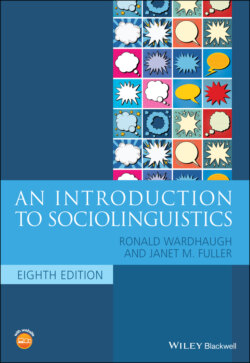Читать книгу An Introduction to Sociolinguistics - Ronald Wardhaugh, Janet M. Fuller - Страница 81
Language attitudes
ОглавлениеAs mentioned above, the study of language attitudes overlaps with the study of language ideologies; both look at how people feel about languages, with language ideology research focusing more on larger societal discourses. The methodologies used to look at these phenomena are part of how we categorize research as being on ideologies or attitudes. This is not a clear distinction, however; although the analysis of discourse has traditionally led to research which talks about ideologies, Liebscher and Dailey‐O’Cain (2017) advocate interactional data in the study of language attitudes.
In this section we will focus on experimental methods more traditionally associated with attitude research. One of the issues involved in research methodology is whether the research participants reveal conscious or explicit language attitudes, or if the task seeks to elicit subconscious or implicit attitudes (see Rosseel and Grondelaers 2019; Pharao and Kristiansen 2019 for an in‐depth discussion of the complexity of these distinctions). While of course it is possible to directly ask research participants what they think of different ways of speaking, in surveys or interviews, a number of other methods have been devised to get at what have been called subconscious or implicit attitudes about language and their users. In the next section, we will discuss a method involving the use of maps to elicit descriptions and evaluations of regional varieties which is called perceptual dialectology. In the subsequent sections, we will also discuss a well‐known indirect method of studying language attitudes, called matched guise or verbal guise technique, and the more recently developed implicit association test.
